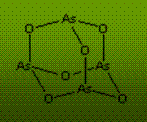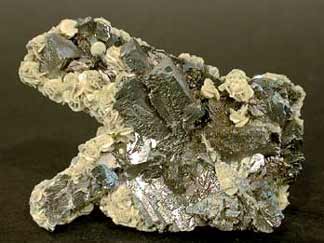Arsenic Contamination In Groundwater In Bangladesh: An Environmental And Social Disaster
Authors
M S Islam, EuroAquae(2005-2007), Hydro Informatics and Water Management Program, University of Newcastle upon Tyne, Department Of Civil Engineering and Geosciences
F. Islam, Assistant Bacteriologist (2006-2008), Bangladesh
Introduction
The contamination of groundwater by arsenic in Bangladesh is one of the largest poisoning of a population in the history. The scale of this environmental poisoning disaster is greater than any seen before. It is beyond the accident at Bhopal, India, in 1984, and Chernobyl, Ukraine, in 1986 (Pearce. F, 2002). Though in 1983, the first arsenic patients seen were from West Bengal, India but it come to consideration and confirmed in 1993 in the Chapai Nawabganj (CN), Bangladesh (DPHE,1993). But at present the contamination has affected 59 of the 64 districts in Bangladesh where arsenic levels have been found to be above the nationally (50 ppb) accepted limit. It is estimated that about 125 million inhabitants of Bangladesh between 35 million and 77 million are at risk of drinking contaminated water (IAEA, 2002)]. Figure 1 shows distribution arsenicconcentration in tube well water samples.

Figure 1: Arsenic map of Bangladesh (DPHE, 2000)
It is estimated that approximately 27% of the wells are contaminated with levels above 50ppb, the current drinking water standard for arsenic in Bangladesh (Mentioned here WHO standard is 10 ppb). Millions of wells are drilled for public water supply in Bangladesh which ensures the purewater supply to the 97% people (Ahmed M.F., 2000) in the country but the arsenic disaster makes tragedy to this success. Still now, there is no determined source of the arsenic or method of contamination which makes it difficult to resolve the problem.
What is Arsenic?
Arsenic is a ubiquitous element in the nature and widely distributed in air, water, soils, rocks, plants and animals in variable concentrations. But it is usually found combined with one or more other elements such as oxygen, chlorine and sulfur, with the highest mineral concentrations occurring as arsenides of gold, silver, copper, iron, and lead. Major arsenic containing minerals are arsenopyrites (FeAsS), realgar (As4S4), orpiment andarsenic trisulfide (As2S3).


Figure 2: (a) Arsenopyrite (b) Arsenite
Its position in the periodic table in the VA column and electronic configuration is 3d104s24p3, with three electrons in the outer shell. This configuration allows a variety of oxidations states: -3, 0, +3 and +5. It is available in both organic and inorganic forms. The inorganic As (III) form as H2AsO3 is 40-60 times more toxic than As (V) form as H2AsO4 (Rashid, M.R and Mridha, M.A.K , 1998).
Sources of Arsenic in Groundwater in Bangladesh
The source and method of arsenic entering the groundwater in Bangladesh is a controversial issue and has yet to be determined. But it is now widely believed that the high arsenic levels in the groundwater in Bangladesh have a natural geological source which may be due to abstraction water from quaternary confined and semi-confined alluvial or deltaic aquifers. A large number of diverse chemical and biological reactions, viz. oxidation, reduction, adsorption, precipitation, methylation and volatilization participate actively in the cycling of this toxic element (Figure 3) in the groundwater table. These reactions control the availability of arsenic, and hence, arsenic concentrations effectively exposed to humans are governed more by arsenic speciation than by the total amount of arsenic. The main process of arsenic contamination is explained in two main processes, namely oxidation of arsenic pyrites or ferrous hydroxides and oxy-hydroxide reduction.
Oxidation of Arsenic Pyrites or Ferrous Hydroxides: Arsenic pyrites or ferrous hydroxides are very arsenic rich minerals which are generally stable in reducing environment under the water table and normally concentrated in organic deposits. But for different anthropogenic activities, like lowering of water table below the organic deposits, accelerate the oxidation process. When they oxidized and arsenic is released from the minerals. Some of them are absorbed onto iron hydroxide. But when water table is recharged and the arsenic adsorbed onto iron hydroxide returns to the reduced environment under the water table and mixes with water and caused the poisoning of water. According to this hypothesis, the origin of arsenic rich groundwater is man-made, which is a recent phenomenon. Moreover, the whole processes also accelerate by different geological process like weathering, erosion, sedimentation, use of irrigation and fertilizers.

Figure 3: Adopted from Roy P. and Saha A., 2002
Oxy-hydroxide Reduction: According to this hypothesis, the origin of arsenic rich groundwater is due to a natural process, and it seems that thearsenic in groundwater has been present for thousands of years without being flushed from the delta. Arsenic is assumed to be present in alluvial sediments with high concentrations in sand grains as a coating of iron hydroxide. The sediments were deposited in valleys eroded in the delta when the stream base level was lowered due to the drop in sea level during the last glacial advance. The organic matter deposited with the sediments reduces the arsenic bearing iron hydroxide and releases arsenic into groundwater. Organic matter deposited in the sediments reduce the arsenic adsorbed on the oxyhydroxides and releases arsenic into the groundwater and dissolution occurs during recharge, caused by microbial oxidation of the organic matter as bacteria dissolves surrounding oxygen.
H2AsO4 - + 3H+ + 2e- ====> H3AsO3 + H2O
2 H3AsO3 + O2====> HAsO4- + H2AsO4- + 3 H+
Toxic Effects of Arsenic to Human Health
Arsenic is toxic substance to human health and toxicity depends on the amount of arsenic intake, which is classified into acute, sub-acute and chronic toxicity respectively. It is a silent killer. It is 4 times as poisonous as mercury and its lethal dose (LD) for human is 125 milligram. Drinking water contamination causes the last variety of toxicity. Undetectable in its early stages, arsenic poisoning takes between 8 and 14 years to impact on health, depending on the amount of arsenic ingested, nutritional status, and immune response of the individual.

Figure 4: Signs of arsenicosis: spots on the hands
Arsenic toxicity is dose dependent, and particularly on the rate of ingestion of arsenic compounds and their excretion from the body but it also accumulate into the body and passes slowly out through hair and nail. Most of the ingested arsenic is excreted from the body through urine, stool, skin, hair, nail and breath. In excessive intake, some amount of arsenic is accumulated in tissues and inhibits cellular enzyme activities. Inhalation, ingestion and skin contact are the primary routes of human exposure to the arsenic. Chronic arsenic ingestion from drinking water is known to cause skin cancer, and there is substantial evidence that it increases risk for cancers of the bladder, lung, kidney, liver, colon, and prostate. Recent studies have also shown that arsenic is associated with a number of non-neoplastic diseases, including cardiac disease, cerebrovascular disease, pulmonary disease, diabetes mellitus and diseases of the arteries, arterioles, and capillaries (Engel, R.R. and Smith, A.H., 2004). Individuals with chronic Hepatitis B infection, protein deficiency or malnutrition may be more sensitive to the effects of arsenic (WHO, 1999). Children and older adults may be other groups at special risk. The Table 1 shows problems and organ of the human body which is generally affected by arsenicosis. Observable symptom to the arsenic poisoning can be thickening and discoloration of skin, stomach pain, nausea, vomiting, diarrhea, numbness in hand and feet, partial paralysis, blindness.
Table 1: Arsenic infection

Social Implications of Arsenicosis
Arsenic contamination in ground water is problematic not only as a health hazard but also a social problem in Bangladesh. There has been little or no social education concerning the treatment of persons affected by arsenic poisoning. Because of illiteracy and lack of information, many confuse the skin lesions with leprosy, which among village people is considered a contagious killer. As a result, those who have early symptoms of arsenicosis do not disclose their condition to avoid certain ostracism. When family members come to know of a sufferer’s warts and black spots, they tend to avoid direct contact with the affected person. Sufferers in rural areas are not allowed to appear in public. Affected school-age children are prevented from attending schools and are avoided by their friends and classmates. Adults are barred from attending cultural/religious functions. Often, when employers discover their affliction, the affected workers immediately lose their jobs. Once detected and dismissed from an employment because of arsenicosis, no other local employer will provide them with alternative employment. Under such circumstances, many have no option but to migrate to urban areas.

Figure 5: Social Implications of Arsenicosis
The worst affected people in Bangladesh are poor women and children. In poor rural households, it is the adult female who is the generally the most undernourished and most vulnerable to disease. When the husband discovers symptoms of arsenicosis on her body, he often refuses to keep her under the same roof. If the woman is fortunate, the husband simply sends her back to her parents for treatment. In most case, however, the husband finds it too risky to maintain the marital relationship and seeks divorce. Women are unable to get married and wives have been abandoned by their husband. As a result, the divorced women find no place in the society and, with their children, become destitute. In villages, it becomes a problem for parents to get their affected daughters married. Arsenicosis also affects the productivity of victims who are often so incapacitated that they are unable to work and become liabilities for their families. The children of the poor have been drinking contaminated water since their birth. They, too, may eventually suffer arsenicosis. It will be very difficult, perhaps impossible, for the parents of an affected young woman to find a groom for her without offering a huge dowry. The provision of dowry is already a difficult, social problem, but will be further compounded by the arsenic problem.
Mitigation
There are two different, but not mutually exclusive, approaches to minimizing the human health impacts of arsenic contamination ofgroundwater:
- Prevention
- Cure
Prevention: To prevent further exposure to Arsenic contamination, it is important to screen of all tube well and population to identify contaminated ones and level of contamination. The GoB has already finished the screening of the tube well. Once the tube well is detected with higher concentration of arsenic than national standard, the tube is marked with red paint and with green paint which is safe to drink (Figure 6). The next steps to provide arsenic free water to all the populations.


Figure 6: Screening of tube well
The people are promoted to take water from the sources which are arsenic free. The people are advised to drink surface water after certain amount treatment with disinfectant or they also promoted for rain water harvesting. The people who are able to bear the cost are suggested to drill tube well in the deep aquifer where water is arsenic free. Where alternate options are not available are suggested and supported to make water arsenic free. There are several techniques to make the water arsenic free. Most common techniques for removal of arsenic from water are based primarily on a few basic processes like oxidation of As3+ to As5+ by addition of a suitable oxidizing agent, precipitative processes including coagulation and filtration, adsorption processes, ion exchange and membrane filtration including reverse osmosis. Based on these techniques different tools are developed for wide distribution to the arsenic exposed area of Bangladesh. The most commonly used arsenic removal units are: 1. Fill and Draw Units 2. BUET Activated Alumina Unit 3. BUET Iron Coated Sand Unit 4. BCSIR Filter Unit 5. Bucket Treatment Unit (BTU) 6. MRT-1000 an Reid System Ltd (TW) and 7. Stevens Institute Technology Unit

Figure 7: Locally adopted As removal technology
In Fill and Draw Unit, the tank is filled with arsenic contaminated water and required quantity of oxidant and coagulant are added to the water. The water is then mixed for 30 seconds by rotating the mixing device at the rate of 60 rpm and left overnight for sedimentation. If anyone wants to take water s/he need to put same amount of contaminated water as s/he want to take the water. In Figure 7 shows a locally adopted fills and draw unit. Activated alumina, Al2O3, having good sorptive surface is an effective medium for arsenic removal. When water passes through a packed column of activated alumina, the impurities including arsenic present in water are adsorbed on the surfaces of activated alumina grains. The Bangladesh University of Engineering and Technology (BUET) Activated Alumina Unit works on those principles. BUET Iron Coated Sand Unit developed a mythology to prepare Iron coated sand following a standard procedure. It was found that 350 bed volumes could be treated satisfying the Bangladesh drinking water standard of 50 ppb (Ahmed M.F, 2000).

Figure 8: Stevens Institute Technology
Bangladesh Council of Scientific and Industrial Research (BCSIR) Filter Unit developed arsenic removal system uses the process of coagulation/co-precipitation with an iron based chemical followed by sand filtration. The Bucket Treatment Unit (BTU), developed by DPHE-Danida Project is based on the principles of coagulation, co- precipitation and adsorption processes. BUET has modified the BTU and obtained better results by using 100 mg/L of ferric chloride and 1.4 mg/L of potassium permanganate which is known as modified BTU units. Jago Corporation Limited promoted a household reverse osmosis water dispenser MRT-1000 Manufactured by B&T Science Co. Limited. Stevens Institute Technology Units also uses two buckets, one to mix with iron sulphate and calcium hypochloride supplied in packets and the other to separate flocs by the processes of sedimentation and filtration (Figure 9). The chemicals form visible large flocs on mixing by stirring with stick. This technology is effective in case of 80 to 95% of the samples tested in reducing arsenic levels to less than 0.05 mg/L (BAMWSP, DFID and WaterAid Bangladesh, 2001).
Conclusions
There is no doubt that the arsenic contamination in Bangladesh is a big environmental disaster in the human history and also a big challenge to a very successful public health story. The complex nature of arsenic increases the severity of the problem. Though different national and international organization are working to provide safe drinking water to the people, but still there not enough technology which are economically affordable to exposed people, technically feasible and environmentally sustainable. So it is important responsibility to both national and international community to have a sustainable technology which can save a millions of peoples from the unlimited suffering and give them a safe drinking water sources.
References
Ahmed M.F. (2000). An Overview of Arsenic Removal Technologies in Bangladesh and India, Banladesh University of Engineering and Technology, Bangladesh
BAMWSP, DFID and WaterAid Bangladesh (2001), Rapid Assessment of Household Level Arsenic Removal Technologies, Phase 1 and Phase-II, Final Report, WS Atkins International Limited.
DPHE (1993) Report on Arsenic Pollution in Nawabganj District, Directorate of Public Health Engineering, Dhaka.
Engel, R.R. and Smith, A.H.(2004), Arsenic in drinking water and mortality from vascular disease: an ecologic analysis in 30 countries in the United States. Archives of Environmental Health 49(5): 418-427 (1994).
IAEA, (2002),Arsenic contamination of groundwater in Bangladesh, International Atomic Energy Agency, Vienna.
Pearce. F,(2002), Bangladesh’s arsenic poisoning: who is to blame?
Rashid, M.R and Mridha, M.A.K (1998). Arsenic contamination in groundwater in Bangladesh. 24 the WEDC conference on Sanitation and water for all , Islamabad, Pakistan, 1998
Roy.P and Saha.A (2002). Metabolism and toxicity of arsenic: A human carcinogen Department of Microbiology, Bose Institute, P-1/12, C.I.T. Scheme VII-M, Kolkata 700 054, India
World Health Organization WHO (1999), Arsenic in Drinking Water, Fact Sheet No. 210 (1999).
Related Publications
Best Practice Guide on the Control of Arsenic in Drinking Water - Prosun Bhattacharya, Dragana Jovanovic and David Polya. Publication Date: Aug 2013 - ISBN - 9781843393856
Arsenic Contamination in the World - Susan Murcott. Publication Date: Oct 2012 - ISBN - 9781780400389